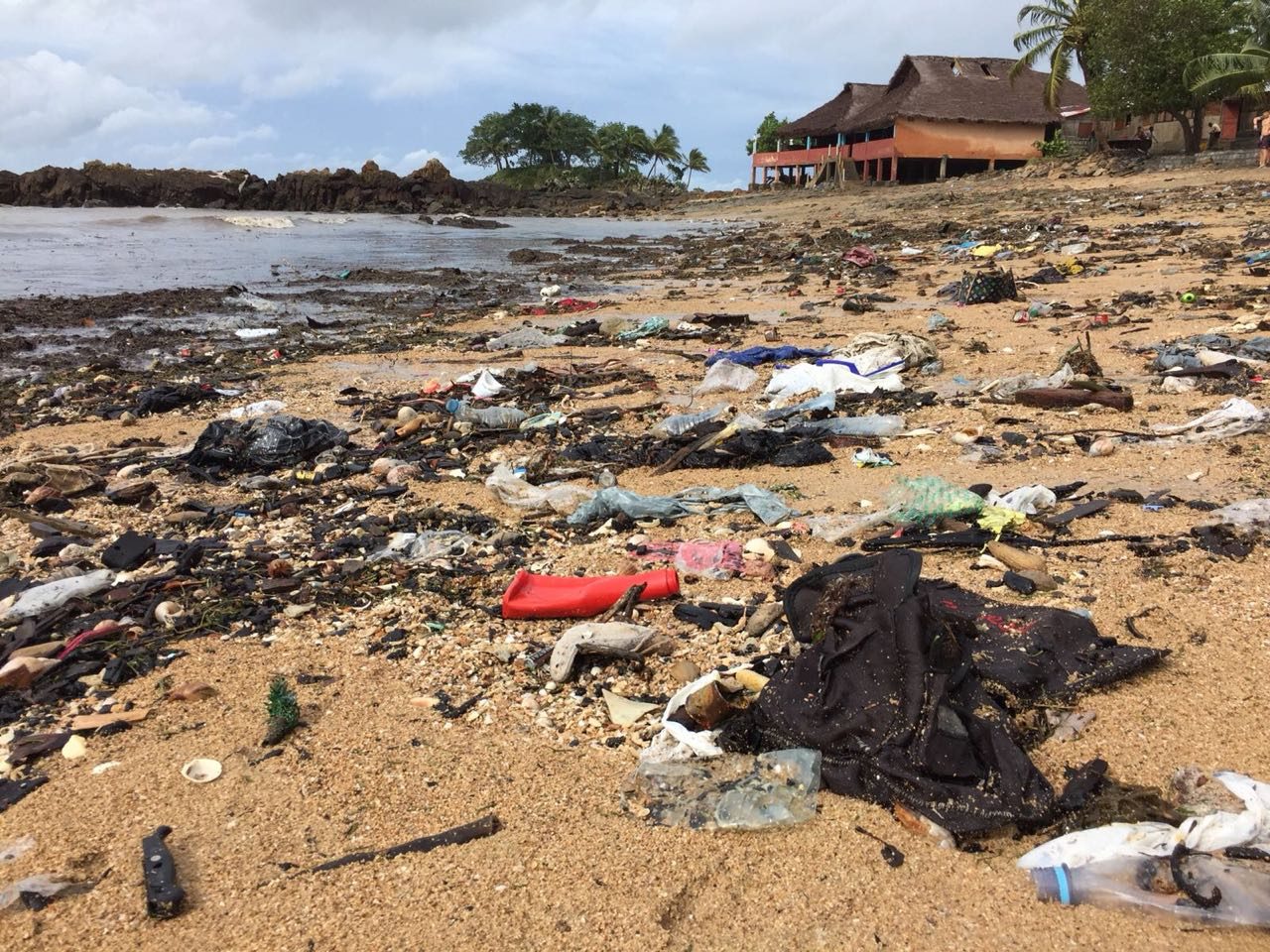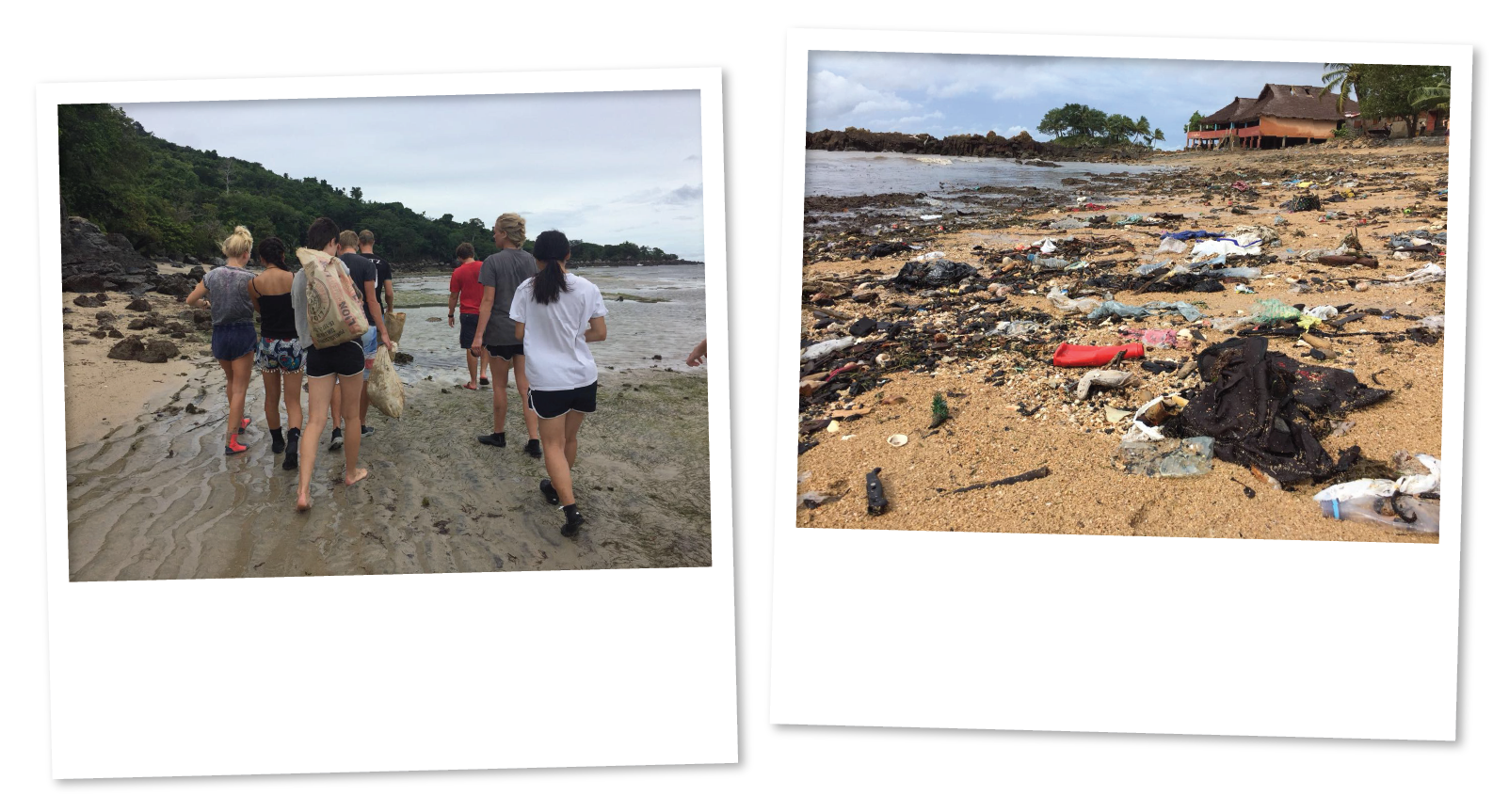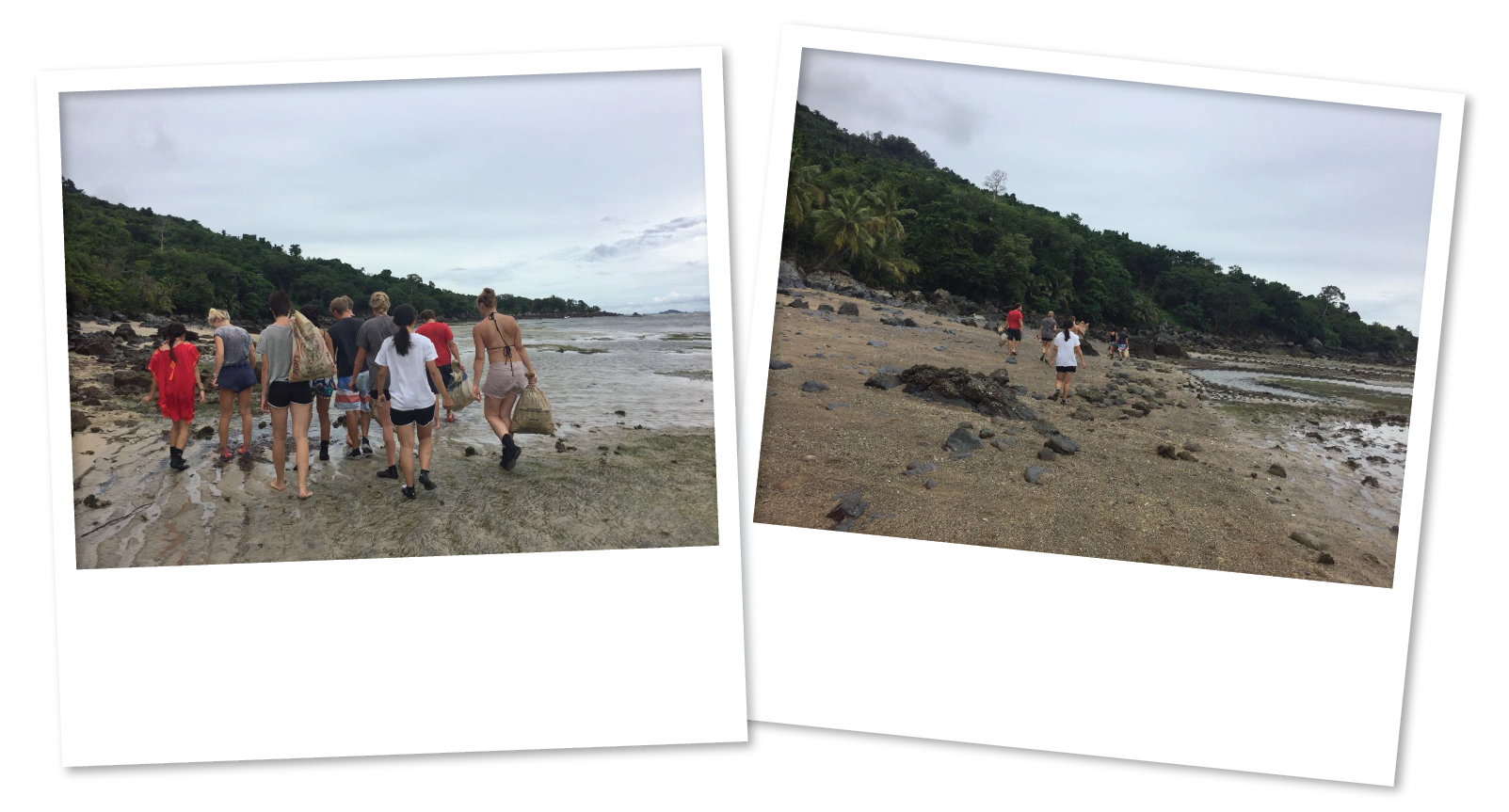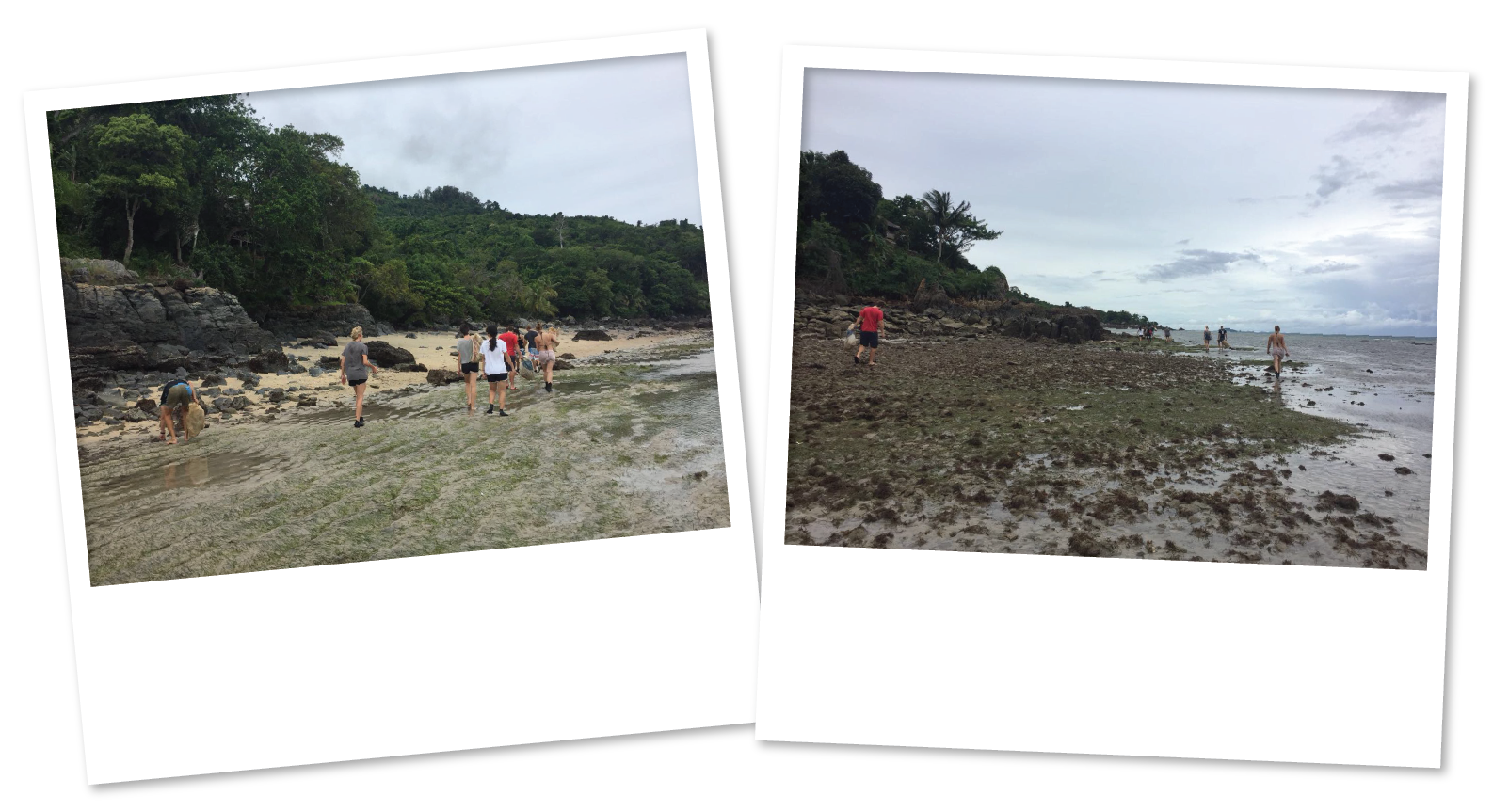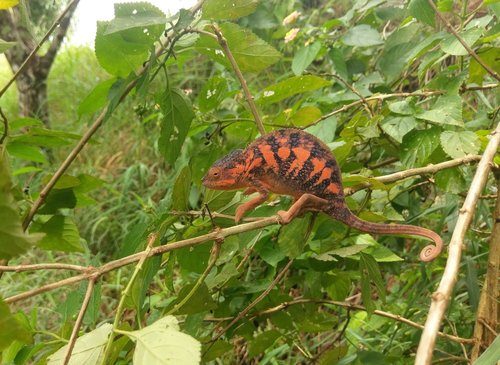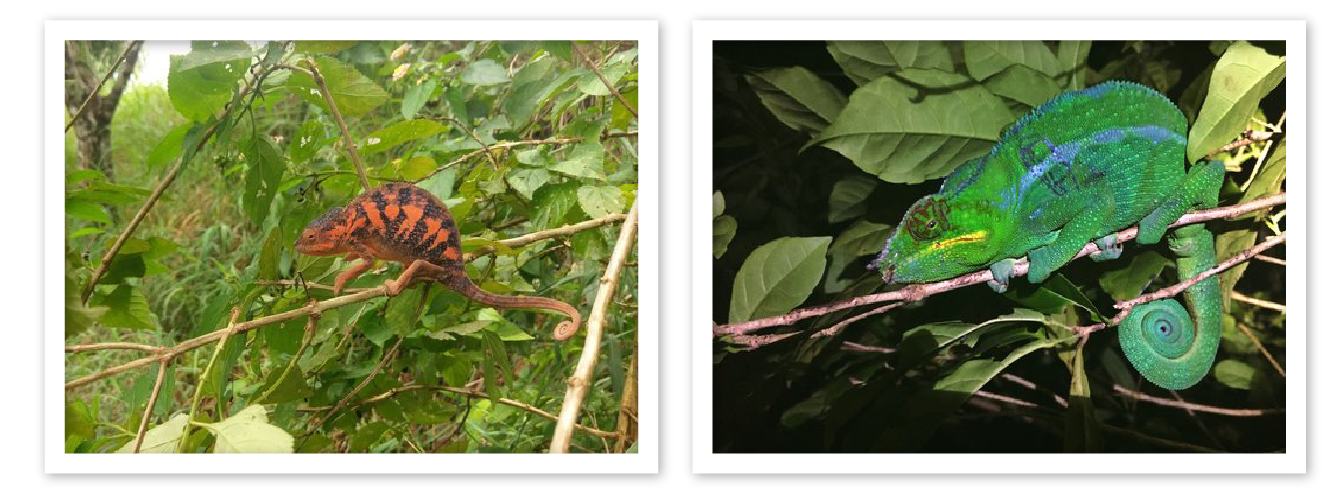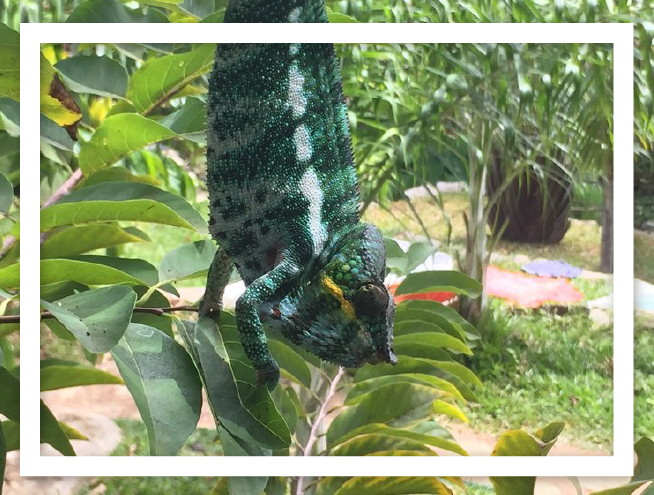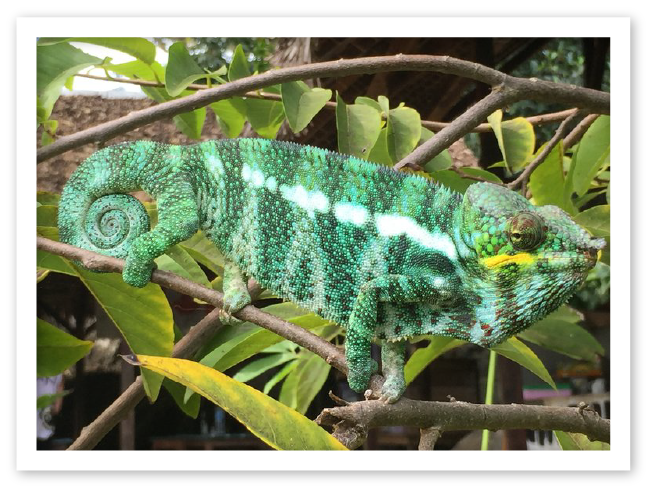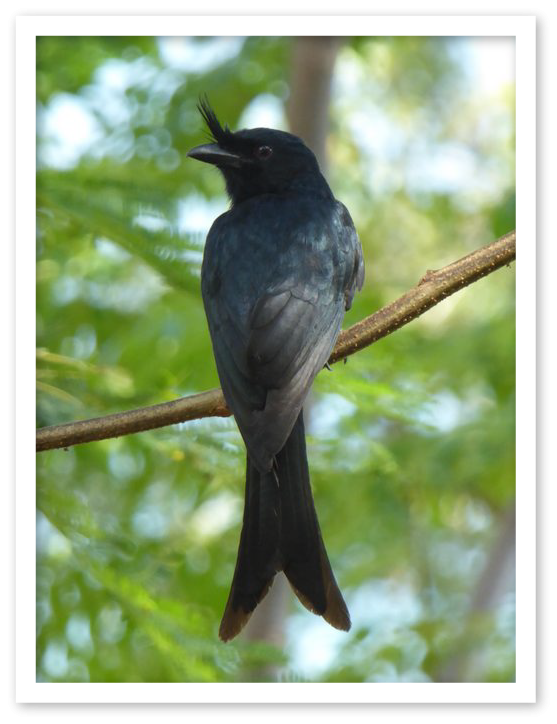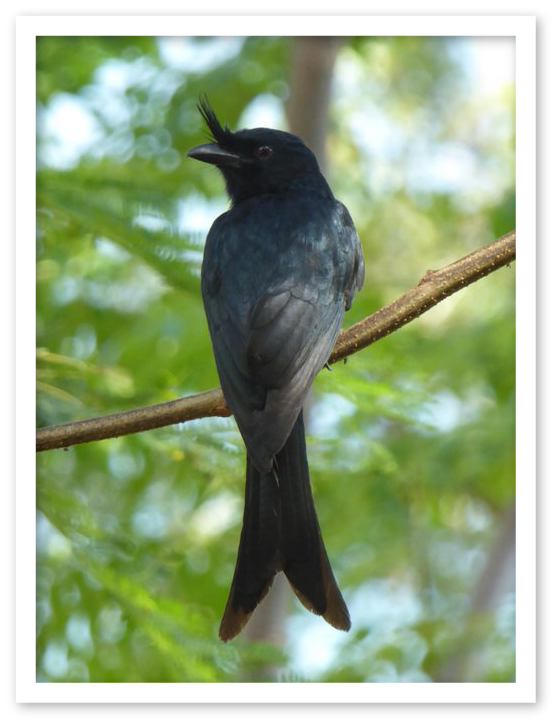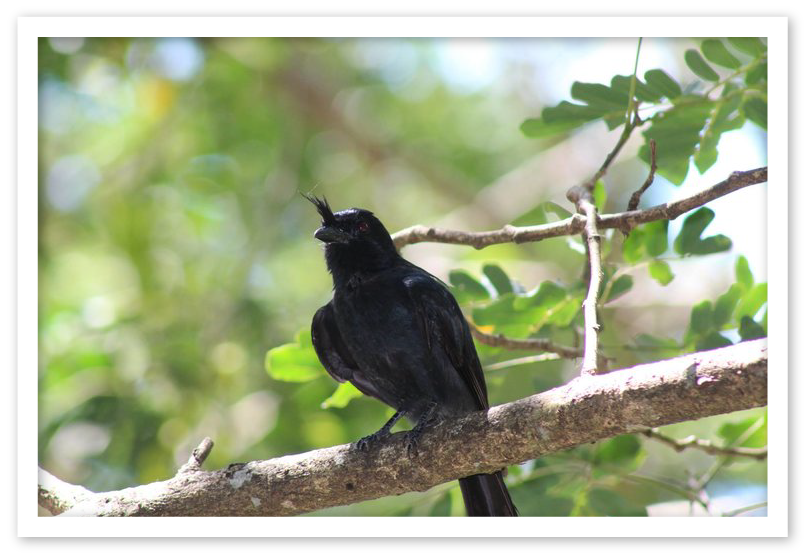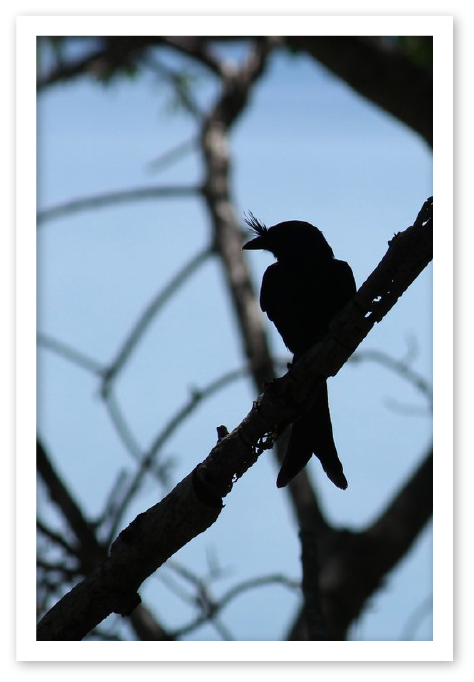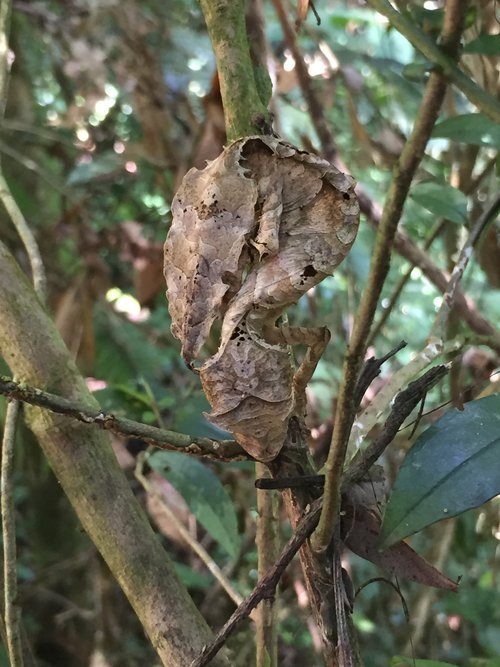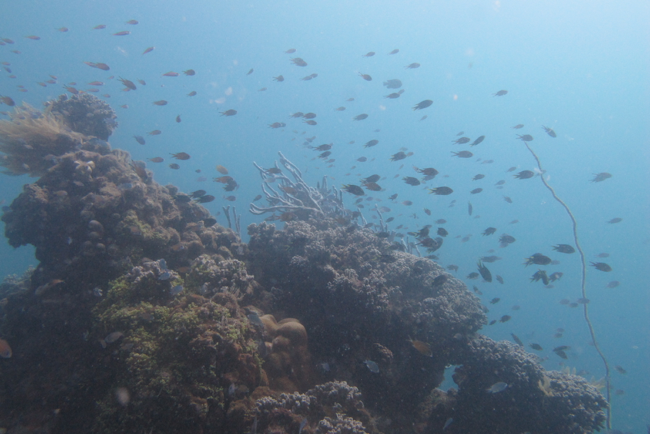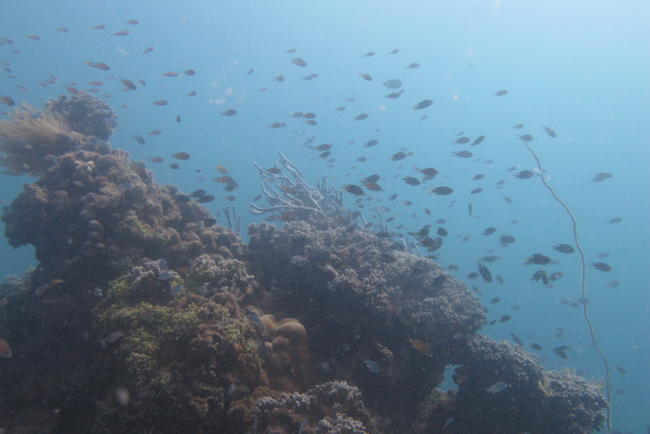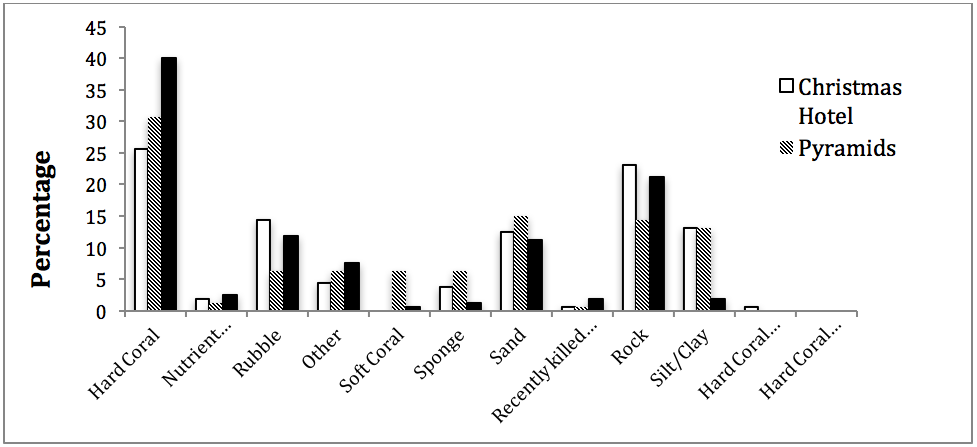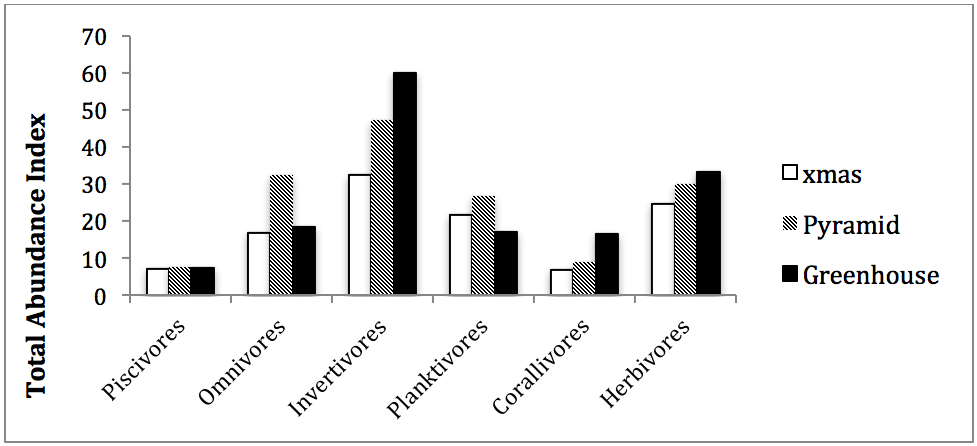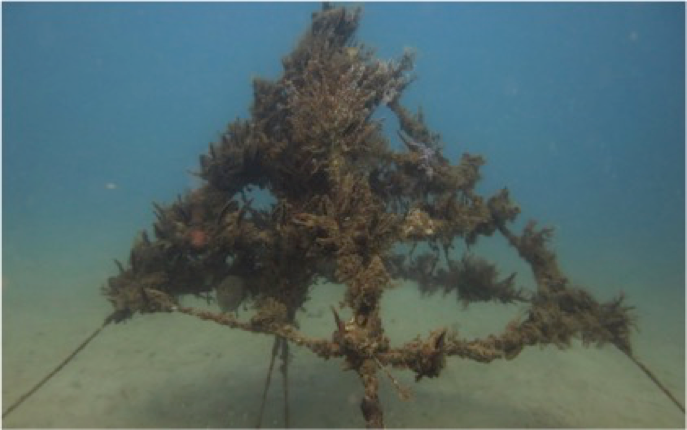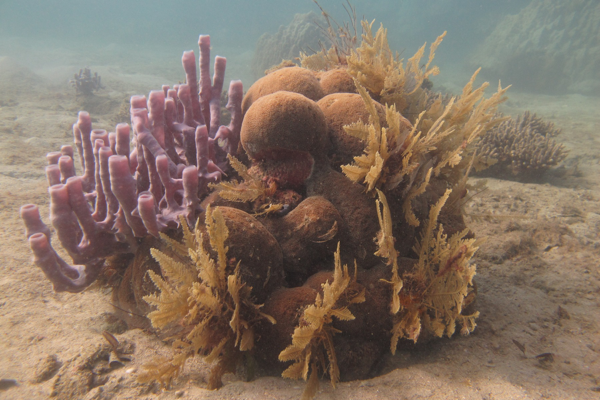Author: Angus Hamilton
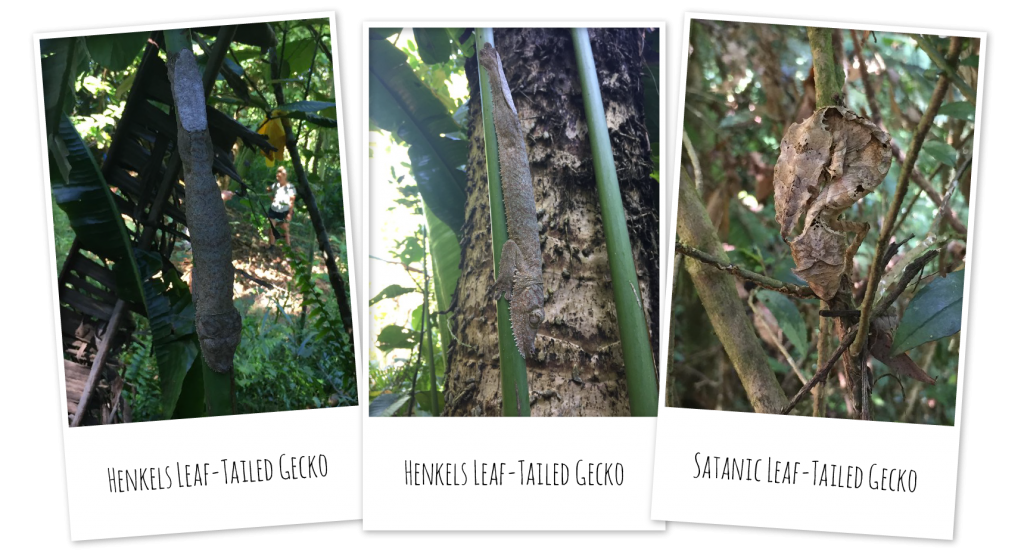
Tales of Camouflage and Leaf-Tails
During my time at the Madagascar Research and Conservation Institute, going out and searching for reptiles and amphibians was one of the most enjoyable parts of the job. Day or night, I was (almost) always keen to get out and conduct another reptile survey. Night surveys were particularly interesting. We tended to conduct these only once a week, rather than the at times every day of the daytime hikes, which meant that these were a special (but tiring) treat.
Night walks gave us a fantastic opportunity to get out and spot some of the more mysterious species of Nosy Komba. The daylight walks were great but there were many species that we’d never get the opportunity to see on these walks. It was only once night fell that we’d get the best opportunity to find some of these bizarre creatures.
At night, the day geckos (Phelsuma) would largely disappear (funnily enough), and in their place would emerge a variety of new nocturnal geckos, each one perhaps more bizarre than the last. This was highlighted by a particularly cool gecko that could shed all of it’s scales when grasped by a predator, leaving just a pink, slimy little body and a predator with a mess of slime and scales! What the hell?!
A couple of the nocturnal geckos are absolute masters of camouflage, and are unlike anything I’ve ever seen.
The leaf-tailed geckos of the genus Uroplatus are extraordinary! There are two branches of gecko within the genus, categorized by their camouflage. The larger, mossy or bark-like leaf-tailed geckos (like U.henkeli, or U.sikorae) and their smaller siblings, the leaf-like leaf-tailed geckos. Across the board, these are some pretty cool geckos, but the larger leaf-tailed geckos are out of this world! The Uroplatus henkeli is found on Nosy Komba, and their camouflage makes them ridiculously difficult to spot. Almost every volunteer that came through our camp dreamed of being able to see one of these elusive reptiles! However, these geckos have only ever been found on one of our transects. To make it even more difficult for the volunteers to see one, we only get to do nocturnal surveys at the site in question as part of a semi-regular overnight hike. So to say that they were a rare find was an understatement!
Now, let’s get into a bit more of the nitty-gritty of the Uroplatus species of Nosy Komba!
Henkel’s leaf-tailed gecko (Uroplatus henkeli) is a simply awesome specimen of a lizard! They are a fairly large species, recorded to grow up to nearly 30cm long. This makes it one of the largest of the leaf-tailed geckos, and one of the largest geckos in the world! They have mottled brown colouration, with a large, flat head and tail. But what is it exactly that makes this (so far) relatively plain sounding lizard such a camouflage aficionado?
Well, on top of their mottled colouring which matches the trees that they rest on, their bodies have developed a little adaptation which helps mask them even further. The Henkel has grown little tubercles along the sides of its body, specifically along the underside of the jaw, and its body up to the back legs. This fringing breaks up the outline of the gecko, making it near indistinguishable from the bark of the tree. It sounds crazy and hard to believe, but having seen it first hand, when they lie flat against the tree trunk they are nigh impossible to make out unless you happen to be looking at the tree from a particular angle. During a walk through Lokobe National Park, I had a henkeli pointed out to me but was simply unable to see it until I changed the angle that I was looking at the tree in question. This experience made me fully appreciate just how good the camouflage capabilities of the mossy leaf-tailed geckos actually is.
There was another thing that made this species such a fixation for volunteers though. When describing this gecko to volunteers, we always made sure that this particular behavioural adaptation was highlighted because it was just SO strange. When threatened, the henkeli would raise its head and tail, open its large mouth wide, and let loose a shrill, piercing scream! To further add to it, over the years a fady (or taboo) developed in relation to the scream of the henkeli. Should a henkeli scream at you, it brings bad luck NOT to scream back at the gecko! Funnily enough, lots of volunteer’s kind of loved the idea of being ‘forced’ to scream at a gecko.
The ‘mossy’ henkeli is not the only species of leaf-tailed gecko on Nosy Komba though! The island is also lucky enough to be home to one of the smallest of the Uroplatus’, the Spearpoint leaf-tailed gecko (Uroplatus ebenaui). These little guys are perhaps my favourite lizard on Komba! On top of being a cute little gecko, their heads look just a tad dragon-ish with little horns above their eye sockets. What’s not to like! Despite lacking the mossy camouflage of its larger brethren, they still have developed some pretty sneaky little adaptations that allow them to blend into their arboreal homes. They have small bodies, and lot of little ridges of skin running along their bodies. These skin folds have a neat little effect. In a similar sense to the henkeli, unless seen at the right angle, these ridges gave the ebenaui a distinctly leaf-like appearance as they sit themselves across a twig waiting for insects to fly, or crawl, past.
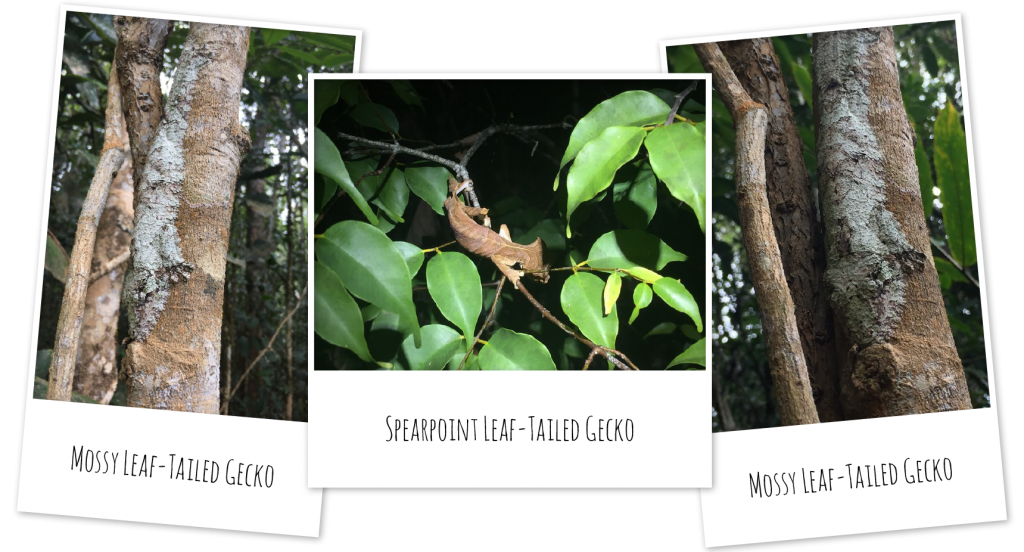
They also have a significantly shorter tail than other Uroplatus species, shaped like (funnily enough) the tip of a spear. When compared to either other species in the leaf-like ebenaui-phantasticus complex, such as the Satanic leaf-tailed gecko of Ranomafana National Park, or the larger leaf-tailed geckos, such as the henkeli or the Mossy Leaf-Tailed Gecko (Uroplatus sikorae), the Spearpoint’s tail is significantly shorter. This can probably be attributed to their preferred substrates. The ebenaui tends to prefer to sit on small, thin branches which means a smaller tail might help them to not stand out. The mossy complex prefers, instead, to spend their days resting one to two meters off the ground, faces pointing downwards and flat against tree trunks. Here a longer, flatter tail would help them blend further into the tree, maximizing their camouflage.
I was lucky enough during my time travelling across mainland Madagascar to come across two other species of Uroplatus. My experience with these enigmatic geckos only further cemented them as my favourite lizards in Madagascar.
While exploring Ranomafana National Park, nearly a seven-hour drive south from the capital Antananarivo (Tana), our guide showed us a small tree and excitedly told us that somewhere on this plant was a leaf-tailed gecko. After a quick search, practically right in the middle of this little tree, was a gecko; Uroplatus phantasicus, or the Satanic leaf-tailed gecko. Getting the name from its devilish ‘horns’ above their eyes, presumably, this species has a larger tail than the Spearpoint leaf-tailed gecko, and looks almost exactly like a dead leaf! They have a paler line running down the center of their body, and thin, leaf-vein-like lines running all over their body. To complete their dead leaf-look, males of the species even have notches on their tails, ensuring the camouflage is accurate, and thus effective, as possible. Unless you knew what you were looking for, these geckos are incredibly difficult to spot.
The other species that I came across was during my time walking through the range of parks surrounding Andasibe National Park, three hours east of Tana. Here we found the Mossy leaf-tailed gecko (Uroplatus sikorae). One of the smaller species of the larger, bark-like leaf-tailed geckoes, once again I was simply blown away by just how good the camouflage of this gecko was! Check out the photo below, and you can see just how much the sikorae looked just like a lichen growth on the tree. It was a great example of how the fringing does a great job of breaking up its outline against the tree!
Currently, 14 species of Uroplatus are recognized, ranging from the Giant Leaf-Tailed Gecko (Uroplatus fimbriatus) which grows over a foot long, to the ten centimeter long ebenaui. Almost all of these 14 leaf-tailed gecko species of Madagascar are listed as being at least ‘vulnerable’ with the IUCN already. Only the Satanic leaf-tailed gecko is listed as ‘least concern.’ However, due to their incredible camouflage these geckos are highly sought after in the pet trade, and as a result have been listed on the CITES appendix II. This tells us that though they are not immediately threatened with extinction, the trade of Uroplatus species must be carefully controlled.
In 2004, all species within the Uroplatus genus were listed in the WWF’s ’10 Most Wanted Species’, a list designed to highlight the animals most at threat from “unsustainable trade and consumer demands” (WWF). Even within protected areas such as national parks, Uroplatus species are still being captured and sold into the illegal pet trade, making it extraordinarily difficult to maintain conservation strategies to help the long-term survival of these incredible geckos.
There is still so much we don’t know about these incredible geckos though. For example, it is thought to be almost certain that there will be more than just 14 species of Uroplatus out there. Scientists are pretty sure that a number of species exist within the current U.ebenaui complex, and it is only a matter of time until more of them are recognized as being separate species. In a similar fashion to the Panther chameleon we’ve looked at previously, once these new species are officially discovered an individual evaluation would need to be conducted. It is difficult to see how a number, if not most, of those new species would not be considered endangered to some degree, considering the survival status of the known species.
Unfortunately, these masters of camouflage are also at great risk from the loss and fragmentation of their habitat. All Uroplatus species depend on intact, relatively healthy forest to survive, and the ongoing deforestation within Madagascar is making this less and less common. Funnily enough, without trees their camouflage is not nearly as successful. When you consider that many of the leaf-tailed gecko species live in isolated pockets of forest, this becomes a little bit more troubling. At the end of the day, the forests of Madagascar are becoming ever smaller.
Follow Angus’s Blog Here
REFERENCES
Arkive (2017). Satanic leaf-tailed gecko videos, photos and facts – Uroplatus phantasticus | Arkive. [online] Arkive. Available at: http://www.arkive.org/satanic-leaf-tailed-gecko/uroplatus-phantasticus/
CITES (2017). How CITES works | CITES. [online] Cites.org. Available at: https://www.cites.org/eng/disc/how.php
IUCN (2017). Uroplatus ebenaui. [online] Iucnredlist.org. Available at: http://www.iucnredlist.org/details/172792/0
IUCN (2017). Uroplatus henkeli. [online] Iucnredlist.org. Available at: http://www.iucnredlist.org/details/178653/0
IUCN (2017). Uroplatus phantasticus. [online] Iucnredlist.org. Available at: http://www.iucnredlist.org/details/172906/0
World Wildlife Fund (2017). WWF Announces ’10 Most Wanted Species’ | Press Releases | WWF. [online] World Wildlife Fund. Available at: https://www.worldwildlife.org/press-releases/wwf-announces-10-most-wanted-species



